Britain’s top-selling brewers are operating in an increasingly challenging market
In addition to soaring fuel and ingredients costs, the government’s recent shake-up of alcohol duty rates has brought its own challenges, while consumer demands – particularly new-generation drinkers – continue to shift out of alcohol and mainstream lager’s favour.
Prior to the legislative change, effective from August 2023, alcoholic drinks were taxed based on their category. They are now broadly taxed according to their strength, with beers below 3.5% abv benefiting from lower rates.
The shift prompted many big brewers to reformulate beers to sit under the 3.5% abv threshold in the UK. Carlsberg unveiled plans to reduce the strength of its flagship pilsner from 3.8% to 3.4% abv in July; and Spanish brewer Damm in August brought a 3.4% abv version of its Rosa Blanca lager to the UK.
As brewers attempt to adapt their popular recipes – limiting any impact on taste – they are also trying to future-proof their businesses by boosting appeal among younger shoppers. In 2022 Heineken UK launched two brand extensions: Strongbow Ultra and Heineken Silver, both aimed at gen Z drinkers.
Read more: Carlsberg Marston’s Brewing Company’s strategy explored
The spin-offs have a lower strength than the originals (at 4% abv) and are packaged in “sleek” 330ml cans, specifically intended to lure younger adult consumers – and Heineken UK spent around £32m on marketing the drinks to its desired audience, with Ultra achieving cut-through among its target audience within the first year.
However, expensive marketing campaigns and attractive branding might not be enough to help brewers win over the elusive gen Z drinker. According to research by Ipsos, 40% of gen Z say they would boycott a brand that fails to deliver on the promises it makes. This insight demonstrates why brewers must be especially prudent when setting their ESG targets; if they don’t meet their goals, they will risk alienating the next generation of drinkers.
So, against these headwinds, here’s how the biggest brewers operating in the UK are faring, along with their plans for the future.
Heineken UK

Many of Heineken’s mainstream lager brands suffered last year, as drinkers added trendier brews to their baskets.
Heineken’s eponymous lager, along with its other top-sellers (Foster’s, Birra Moretti, Desperados and Red Stripe) showed volume declines, losing £48.2m between them, according to NIQ data in The Grocer’s Top Products survey 2023 [52 w/e 9 September 2023].
In cider, market leader Strongbow lost volumes, with value sales down £17.3m across its Original and Dark Fruits variants.
But it wasn’t all bad news for Heineken. Beavertown Neck Oil, for instance, cashed in an additional £3.9m on volumes up 20.5%, thanks to shoppers’ growing thirst for craft-inspired brews. Meanwhile, Heineken’s marketing offensive on its Silver spin-off seemed to work, with its value up by 27.2%, according to NIQ data. This success was the fruit of a small rebrand following a trying launch year in the off-trade.
Then there was Inch’s, which achieved the largest absolute gain of any of the top 30 cider brands, cashing in an additional £11.7m on volumes up 20.5%.
In 2022, Heineken UK set itself a target of achieving net zero carbon emissions in production by 2030, and net zero emissions across its entire value chain by 2040. The brewer is already making strides towards this goal.
Read more: How can brewers impress supermarket beer buyers?
It rolled out an improved, double-layered version of its Green Grip cardboard multipack can topper in October 2022, as part of a £14m investment across its UK sites.
At the time, Heineken claimed the first iteration, introduced in August 2020, had already saved 336 tonnes of single-use plastic. But a big Green Grip rethink was required after the packaging cut some customers, seeing it removed from shelves before a relaunch.
Heineken then announced in June 2023 it would pump £25m into its Manchester brewery to improve its sustainability.
The investment will cover the installation of heat pumps, which will capture and reuse thermal energy released during the brewing and packaging processes. This captured energy will “replace the thermal energy previously generated from burning fossil fuels”, according to Heineken.
Once in place, the upgrades will result in up to a 45% gas reduction as well as reduced carbon emissions at the site. The installation will be followed by the decarbonisation of Heineken’s brewhouse this year, and a shift to using additional renewable energy at the site.
Heineken has also set itself D&I targets. It aims for at least 30% of its senior management roles to be held by women by 2025, increasing to 40% by 2030.
Key future focuses:
- Net zero emissions by 2040
- Cut carbon emissions at Manchester brewery through installation of heat pumps
- Women in 40% senior management roles by 2030.
Budweiser Brewing Group UK&I
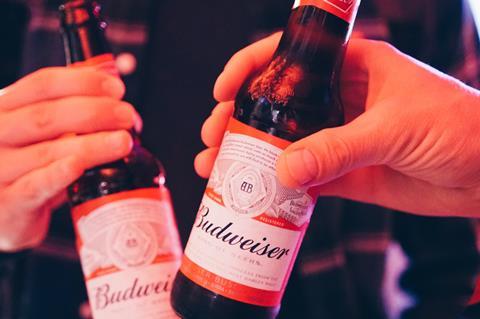
Britain’s two top-selling lager brands, BBG’s Stella Artois and Budweiser, lost a combined £21.1m last year.
Much like Heineken’s mainstream lagers, they struggled to entice shoppers as new, premium entrants stole shelf space.
Stella Artois’ Unfiltered spin-off, which launched in March 2022, fared much better. It cashed in an additional £12.8m on volumes up 83.0%, according to NIQ data. And when combined with Corona, which cashed in an extra £20m on volumes up 3.8%, its performance more than made up for Stella’s and Bud’s woes.
The success of Stella Artois Unfiltered might be thanks to its “unique and vibrant taste profile”, which “could be found in craft beer”, playing to shoppers’ changing tastes, says BBG global brands marketing director Jessica McGeorge.
Despite mainstream lager’s struggles, BBG UK&I CEO Brian Perkins sees opportunities for the brewer to drive growth in other categories, such as low & no.
“It’s important not to fight what consumers are asking for,” he told The Grocer in an interview last year. “If they want more non-alcohol options, it’s our job to make them.”
As well as innovating in low & no, BBG is working towards ambitious ESG targets.
Like Heineken, it aims to achieve net zero across its value chain by 2040, and it plans to work towards this goal by building hydrogen power infrastructure at its two largest breweries: Magor and Samlesbury.
BBG has already achieved net zero operations at its Kentish Town brewery and claims to brew every single can, bottle and keg in the UK with 100% renewable electricity from its own wind turbine and two solar farms. The brewer has also removed plastic rings from its entire portfolio.
Key future focuses:
- Expand low & no portfolio
- Net zero emissions by 2040
- Build hydrogen power infrastructure at Magor and Samlesbury breweries.
Carlsberg Marston’s Brewing Company
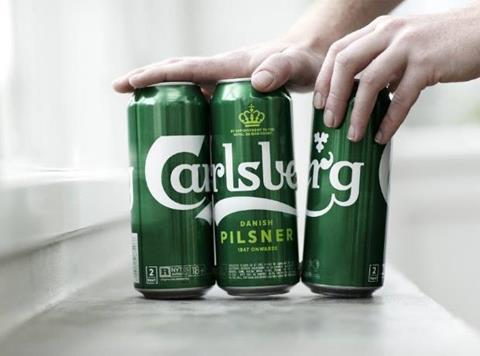
CMBC’s top-selling lager brands fared well last year in comparison to their rivals. San Miguel, Kronenbourg and Carlsberg saw an uplift in volume sales, banking an extra £32.1m between them.
According to CMBC’s marketing VP John Clements, San Miguel (up 8.6% on volumes up 5.4%) benefited from shoppers’ growing thirst for world lagers, as well as its multimillion-pound ‘Here’s to the Seekers’ campaign, which premiered in June 2023.
CMBC, like its rivals, has been making efforts to ramp up its sustainability credentials over recent years.
The brewer debuted its ‘snap pack’ format in 2018, which uses glue dots to hold multipack cans together in place of plastic.
Read more: What’s next for craft beer?
CMBC in March 2023 unveiled plans to exclusively use regenerative barley in all Carlsberg Danish Pilsner brews by 2027, and across its other UK-brewed brands –including Carlsberg Expørt, Birrificio Angelo Poretti, Hobgoblin and Brooklyn Pilsner– by 2031, ahead of the wider Carlsberg Group’s 2040 target.
The initiative saw CMBC partner with 23 farmers to grow regenerative barley in 2023, which it will start using in Carlsberg Danish Pilsner this year.
Furthermore, CMBC announced plans in October 2023 to invest more than £10m at its Northampton brewery to double production of ‘snap pack’ packaging and reduce its water usage.
The upgrades, which will be operational from early 2024, include the installation of new machines to package cans in CMBC’s snap pack format, alongside a new laser can encoder and an improved can filler and seamer.
CMBC said the investment would help it eliminate plastic rings from its four and six-can multipacks by the end of 2024 through the expansion of snap pack. This, and investment in CMBC’s other breweries, will help it achieve its target of net zero carbon emissions by 2030.
Key future focuses:
- Achieve net zero across UK breweries by 2030
- Use regenerative barley in all UK brews by 2031
- Eliminate plastic rings from four and six-can multipacks by end of 2024.
Molson Coors Beverage Company
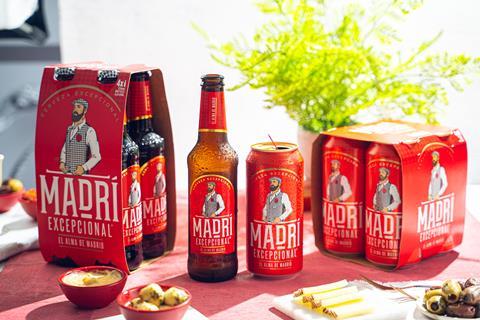
While Molson Coors’ top-selling lager brand Carling shed £12.9m last year, stablemate Madrí Excepcional more than made up for its losses.
Having made its off-trade debut in March 2022, it shifted an extra 20.7 million litres through the tills and gained £66.6m, according to NIQ data.
Made in partnership with Spain’s La Sagra brewery, Madrí Excepcional’s launch preceded the entry of several other Spanish-style lagers into UK retail, including Heineken’s Cruzcampo and Damm’s Rosa Blanca.
Molson Coors backed the beer with a £4m marketing push, starting in April 2023, which saw the fast-growing brand host “city-wide takeovers” over summer.
Despite Madrí’s success, Molson Coors’ ambitions expand far beyond selling beer alone.
“Since 2021 we have expanded our portfolio through exclusive distribution partnerships with exciting brands such as Black Cow Vodka, Southwestern Distillery (including Tarquin’s Gin and Twin Fin Rum) and Bandero Tequila,” says Molson Coors off-trade sales director Kevin Fawell.
“We continue to work hard to deliver more great products beyond our beer and cider heartlands to reach a broader range of consumers, and this will form a central part of our plans over the next 12 months and beyond.”
These plans include further innovation in the low & no category “as the trend towards moderation continues”, says Fawell.
Molson Coors launched alcohol-free spin-offs of its Staropramen and Cobra beers in 2023; perhaps Madrí Excepcional 0.0 is in the pipeline…
Molson Coors is also busy working towards its ESG targets. In 2019, the brewer set an ambition of reducing carbon emissions across its direct operations by 50% by 2025 globally. It achieved its ambition in 2021, four years ahead of its goal.
In the same year, Molson Coors became the first brewer to make all of its products using 100% renewable electricity.
The brewer is now working to reach net zero in western Europe across Scopes 1 & 2 by 2035. It recently installed a new carbon dioxide recovery system at its Tadcaster brewery, which will be operational from early 2024.
Key future focuses:
- Innovate beyond beer and cider, with a focus on low & no
- Net zero emissions across Scopes 1 & 2 by 2035
- Kick-start carbon dioxide recovery system at Tadcaster brewery.







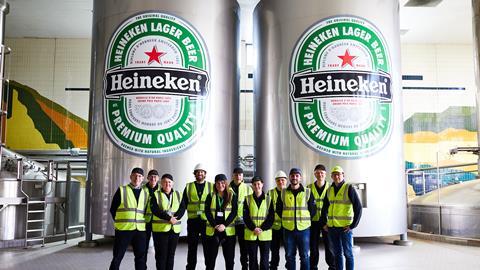

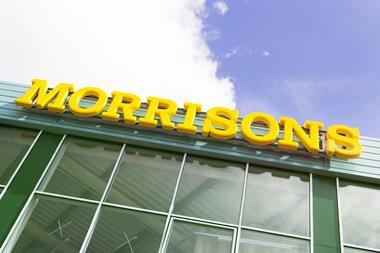
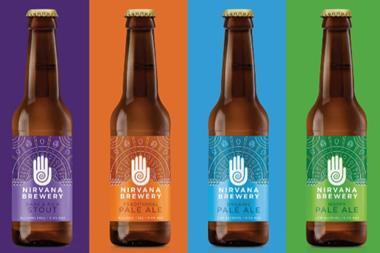









No comments yet